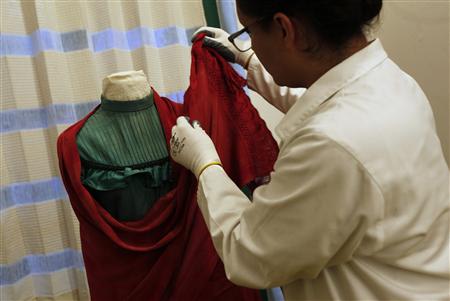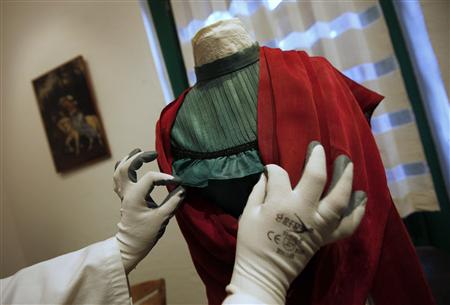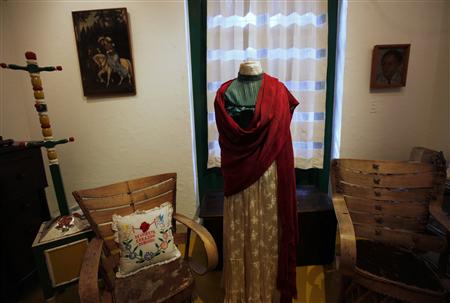MEXICO CITY (Reuters) - The colorful dresses of Mexican painter Frida Kahlo
will go on display for the first time in November after being kept
hidden from public view for 50 years at the request of her husband,
acclaimed muralist Diego Rivera.
Curators of the Kahlo's "Blue House" in Mexico
City discovered a trove of 300 dresses, bathing suits, accessories and
photographs in 2004 and are now ready to show the public 22 items from
the unique wardrobe that turned her into a fashion muse.
The exhibit explores Kahlo's fascination with Mexico's
indigenous women and her penchant for richly embroidered ethnic frocks,
flowery headpieces and ornate silver jewelry that earned her a photo
shoot with Vogue magazine in 1937.
It also reveals how
she chose clothes to hide her disfigurement after a bout of childhood
polio that left one leg thinner than the other and a devastating bus
accident that broke her spine in three places and left her in constant
pain and scarred from subsequent surgeries.
"We must remember
that Frida - like Diego - wanted the colors, the dress, the culture of
Mexican women to be public and known," said Carlos Phillips, head of the
museums that exhibit Kahlo and Rivera's work.

"They were
attempting to rescue a people which had been abandoned. Mexican society
dressed like Europeans. Those types of clothes weren't appreciated as
much anymore," he said.
Kahlo and Rivera
are two of Mexico's most celebrated figures, and their on-off stormy
marriage was among the most prominent of the 20th century art world.
Kahlo, who died
from pneumonia in 1954 at age 47, led a troubled life fraught with
illness and tumultuous love affairs. A member of the Mexican Communist Party, she was a fierce supporter of the country's traditional culture.
"Frida Kahlo without a doubt is a very important icon
in the fashion scene," said Kelly Talamas, editor of Vogue magazine for
Mexico and Latin America.
"She had more of a dark side, and also had her side in
which she was inspired by the colors and the textures and the people and
the culture here in Mexico," she said. "I think that's what's most
inspiring to designers, that the pieces that she wore create a story."
Vogue has commissioned contemporary Frida-inspired
pieces from several designers to display alongside the originals.
PAIN AND DISFIGUREMENT
Kahlo began painting as a teenager while convalescing
from the crash in 1925 and her work and the numerous self-portraits for
which she is best known reflect the searing pain she lived with until
her death.
The museum had
respected Rivera's request to keep Frida's clothing under lock and key
for half a century after she died in 1954. Rivera had wanted to preserve
the items and protect them from people who might not take care of them
properly.
When they did start examining the items, they were thrilled to find the exact outfit worn in the 1937 Vogue shoot.
Seen by Reuters, it
features a European-inspired green, ruffled blouse with high neck and
long sleeves, with small buttons down the back, and a voluminous,
ivory-colored silk taffeta skirt with a floral print and lace hem. A
magenta shawl wrapped around the shoulders completed the look. The
blouse now has some stains from Kahlo's oil paints.
"She didn't just choose any dress. This particular
dress ... symbolizes a strong woman," said Circe Henestrosa, the
exhibit's curator.
"It's also a dress that projected her political beliefs
and her desire to promote her Mexican identity. As far as her
disability, it's a dress that allowed her to hide her physical
imperfections," she said.
(Writing by Bernd Debusmann Junior and Louise Egan; Editing by Simon Gardner)

